SHADES
Shades create a simple, tailored look that can be anything from sleek and modern to soft and traditional. And they offer flexible options to meet any need, like top-down / bottom-up operation, cordless and motorized controls, and energy efficiency. Window shades are usually made of fabric and can be retracted to expose the entire window. Shades do not allow for light adjustment when covering the window as a blind with slats does. Our professional design consultants can help you pick the style, fabric, and functionality that’s perfect for your home or office.
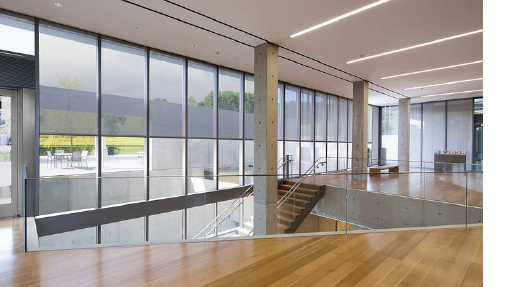
Roller shades
Roller shades are window treatments made up of a flat piece of material that can be rolled up to expose an entire window. They come in an array of colors, textures, shapes, and sizes. Roller shades complement a wide range of interior designs.
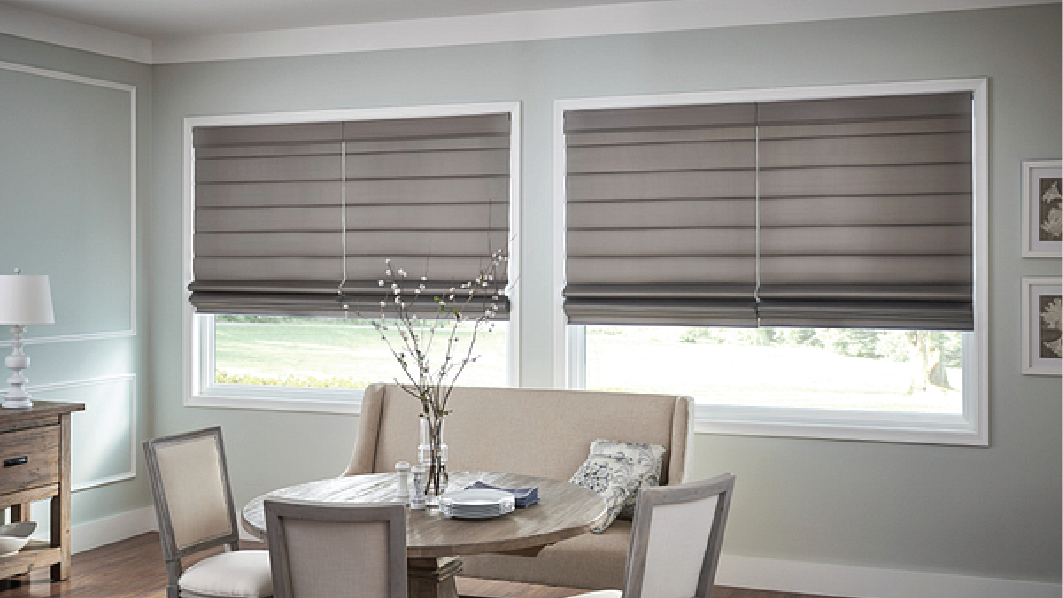
Roman shades
Roman shades are a great option for controlling light and privacy. They offer added softness to a room and the luxurious feel of fabric. Roman shades make a fashionable statement, combining form and function.

Cellular shades
Cellular shades, also known as honeycomb or pleated shades, help trap heat or cold air. Cellular shades can be customized with different pleat sizes, single or double cell configurations, and opacity levels ranging from room-darkening (blackout) to sheer.
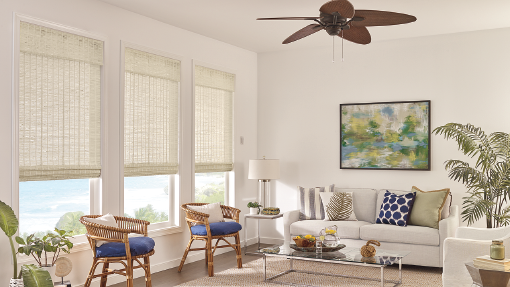
woven wood shades
Woven wood shades are an attractive natural alternative to other popular window treatments. They are available in a variety of materials including bamboo, grasses, and reeds. Woven wood shades add texture and style to any room.

Solar shades
Solar shades are a sleek, modern option for both commercial and residential properties. They offer a sheer look that reduces glare and minimizes UV light and heat while preserving beautiful views. Solar shades are energy efficient and help beat the heat, reducing air conditioning costs.
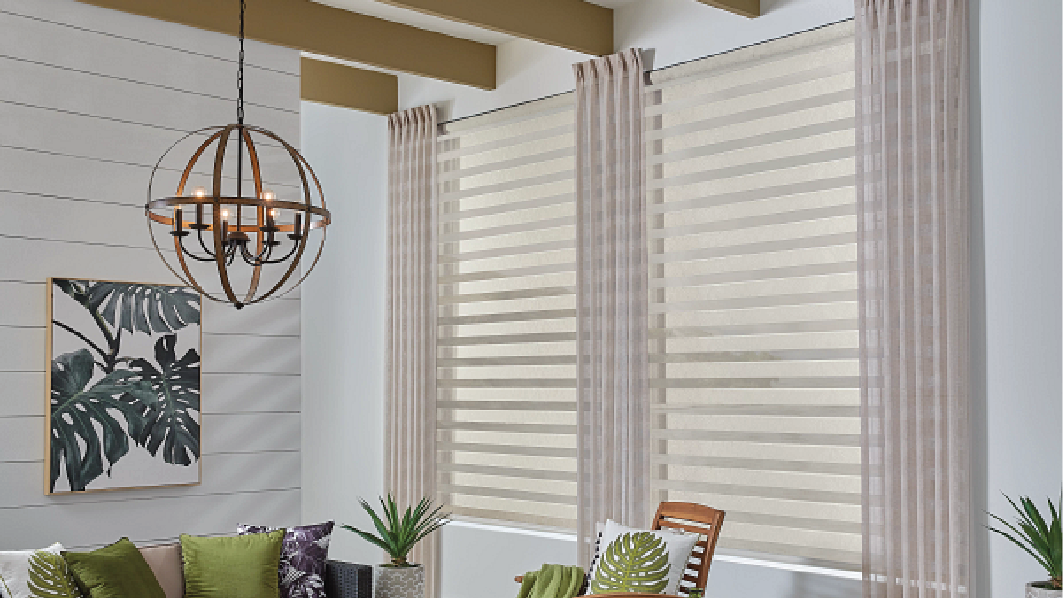
Transitional / Layered shades
Transitional or layered shades, sometimes referred to as zebra shades, are a hybrid of fabric shades and horizontal blinds. They offer a wide range of flexibility in light control with a simple, minimalist design. They offer a contemporary style with clean horizontal lines and are constructed with alternating panels of sheer fabric and wide, bold stripes of color.
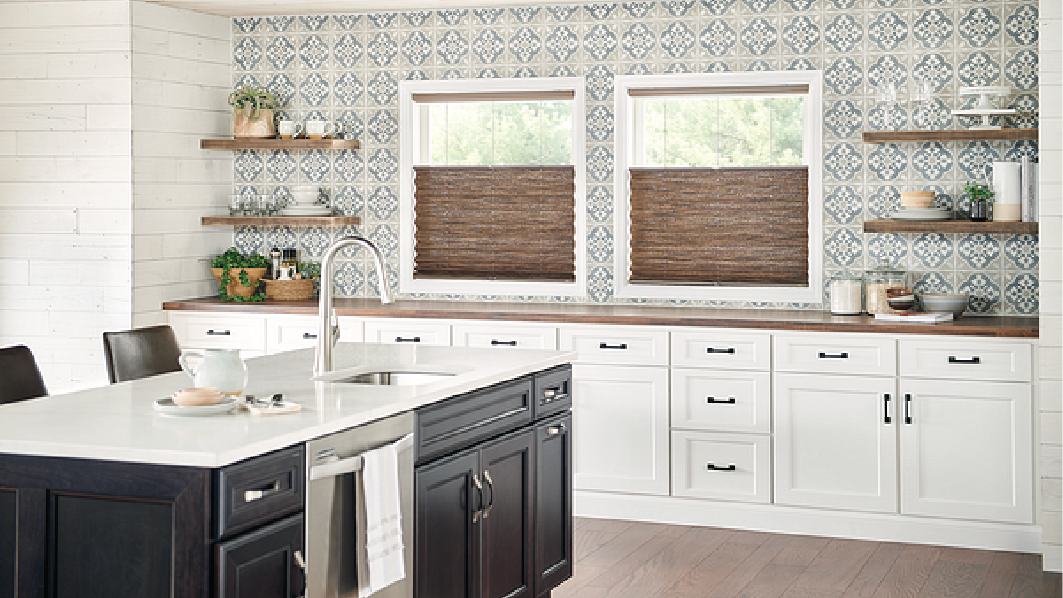
pleated shades
Pleated shades are shades made with a single layer of fabric that is folded so that it compacts like an accordion when pulled up. Pleated shades help add definition and texture to a room. They look like cellular shades but offered at a more economical price. A liner may be added for enhanced privacy.
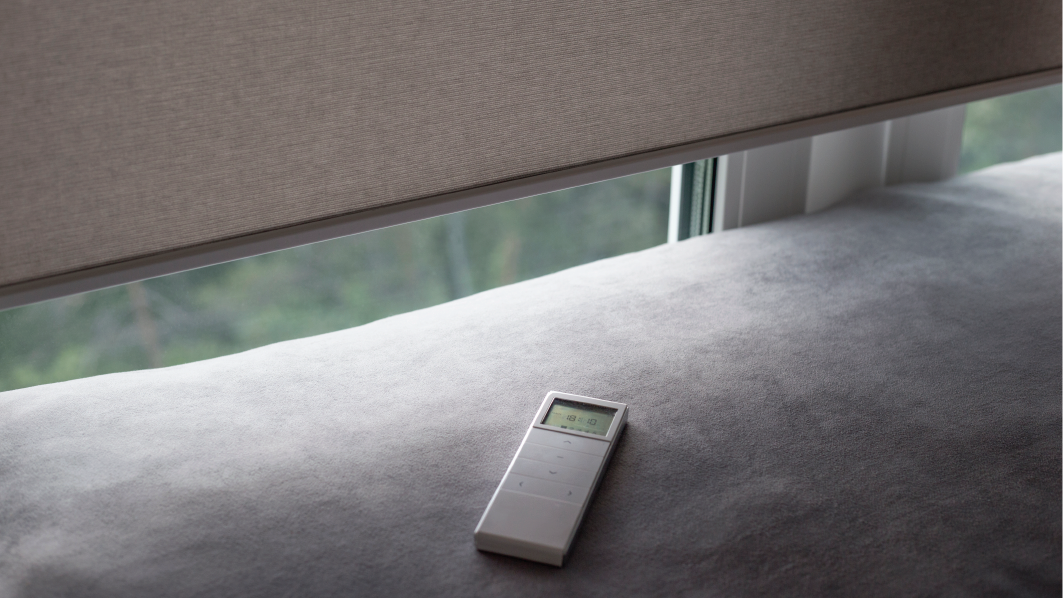
motorized shades
Motorized blinds and shades allow you to tilt, open and close window treatments with a push of a button or tap of a phone. For commercial facilities, motorized shades can be fully integrated into a building management system. Motorized shades are the ultimate in convenience and are perfect for hard to reach windows.
measurement and installation
We make measuring for shades simple with our step-by-step guide.
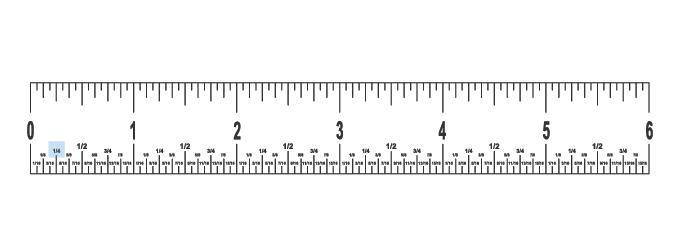
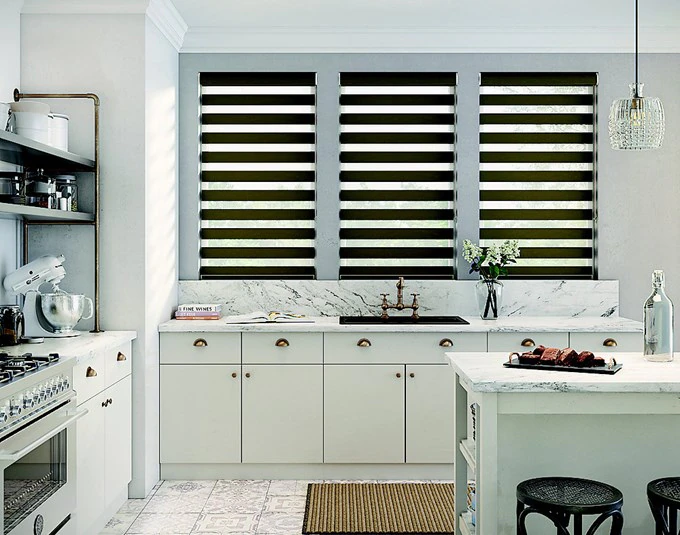
Image credit: Levolor
Featured product: Banded shades
Basic Tips
- Use a steel measuring tape
- Measure to the nearest 1/8″ inch, if the size is on a 1/16″ mark, then round down to the next 1/8″ inch.
Helpful Hints for Measuring Shades
- For the most accurate measurements, only use a steel tape measure.
- Don’t mix up width and height measurements. Always follow the width by height format (W x H) and mark them as such.
- Measure down to the nearest 1/8 inch.
- If you’re measuring for more than one window, measure each one individually – never assume that your windows are the same size, even if they may look alike.
MEASURING FOR INSIDE MOUNT INSTALLATION
Inside mount shades are installed inside the window frame or casing – they provide a sleek, clean look which can showcase your windows and moldings.
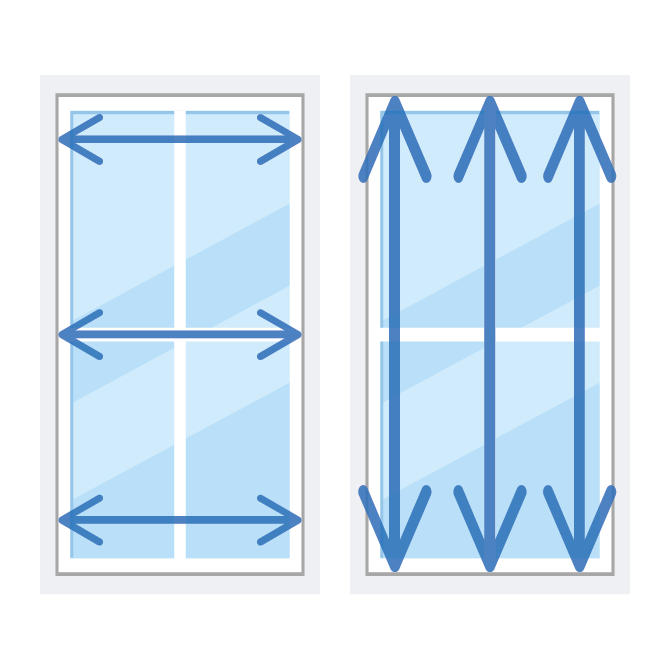
How to Measure for Inside Mount Shades
- Measure the depth of your window frame, from the front of the opening to the glass. You’ll need this measurement to ensure your window recess meets the minimum depth requirement for an inside mount. Refer to the Mounting Requirements section for the shade you’ve chosen to ensure your window meets the requirement for an inside mount.
- Measure the width of each window. Record the width at the top, middle, and bottom of your window opening. Circle the narrowest measurement of the three – this is the number you submit for your window’s width.
- Measure the height of your window opening in three places: left, center, and right. Circle the tallest measurement – this is the number you submit for your window’s height.
- Order at the exact opening size with no deductions. The factory will take deductions in production.
- Double check that your measurements follow the width by height format (W x H).
MEASURING FOR OUTSIDE MOUNT INSTALLATION
Outside mount shades are mounted on the window molding or wall above your window. Outside mount shades are a good choice if an inside mount is not possible due to window depth or obstructions around the window frame. Outside mount shades will be made at the exact size you specify.
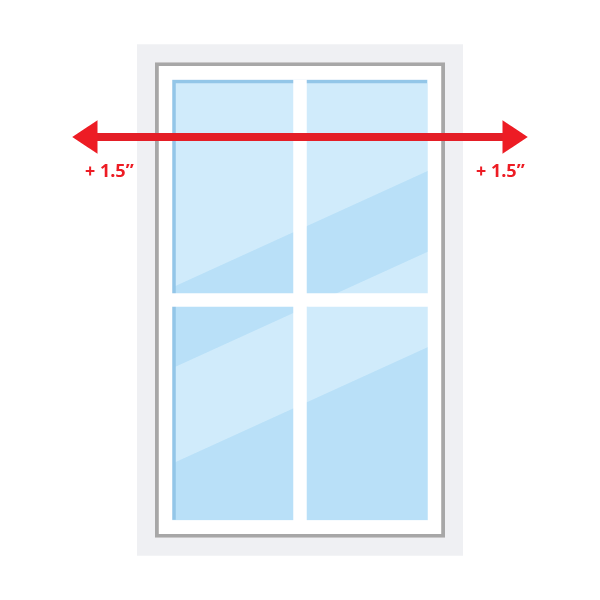
How to Measure for Outside Mount Shades
- Check the mounting requirements on your shades to ensure you have enough flat surface for the outside mount.
- Determine the width of the shades you want to order. If you have window trim, simply measure to the far edges of the trim from left to right.
- If your window has no trim, we recommend adding two inches on each side of your window to provide light gap coverage and privacy. Mark these additions on each side and measure the width between them in a straight line.
- Determine the height of the shades you will order. If you have a protruding window sill, start at the sill and measure three inches beyond the top of the window opening to accommodate for mounting hardware.
- If you do not have a protruding window sill, we recommend starting your measurement two inches below the sill for maximum coverage and then measure three inches beyond the top of the window opening to accommodate for mounting hardware.
- Double check that your measurements follow the width by height format (W x H).
Get professional measurement and installation help
Our professionals are ready to help you with both measurement and installation.
Click below or call us at 410-413-1320 to find a local professional.
Contact Us
We look forward to serving you. Monday through Friday from 8:30am until 4:30pm.

Office Location
3 Easter Court
Suite K
Owings Mills, MD 21117